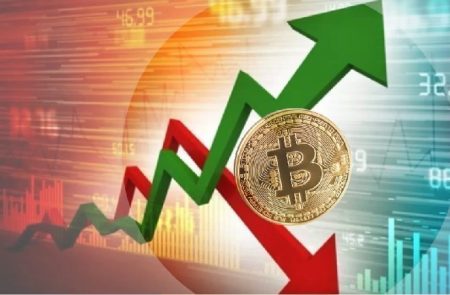Binance Under Fire: Accusations of Market Manipulation as Solana Threatens BNB’s Position
Allegations Surface of Deliberate Market Suppression Through Wintermute Partnership
In a development that has sent ripples through the cryptocurrency ecosystem, Binance—the world’s largest cryptocurrency exchange by trading volume—faces serious allegations of market manipulation designed to prevent Solana (SOL) from surpassing Binance Coin (BNB) in market capitalization. These accusations have ignited a firestorm of controversy in the digital asset space, raising fundamental questions about market integrity and the true nature of decentralization in cryptocurrency markets.
Crypto analyst Marty Party initiated the contentious debate on X (formerly Twitter), presenting what he described as “receipts” that allegedly demonstrate Binance’s collaboration with market maker Wintermute to artificially suppress Solana’s price movement. The crux of his argument centers on a perplexing discrepancy: How could Binance be sourcing sufficient SOL for its extensive trading activities when its official proof of reserves (PoR) documentation indicates no Solana holdings beyond customer deposits?
“Market Maker Update: @binance won’t allow @solana to pass $BNB marketcap so they suppress it using @wintermute_t here are the receipts,” Marty Party posted, directly challenging regulatory figures including Caroline Pham. “Where are they getting this $SOL when their proof of reserves says they have no $SOL other than [customer deposits]?”
At the time of reporting, Solana traded at approximately $203 with a market capitalization of $109.7 billion—dangerously close to BNB’s $120.6 billion valuation (with BNB priced at $865.97). This proximity in market capitalization potentially explains the timing of these allegations, as Solana’s remarkable growth trajectory appears poised to overtake BNB’s long-established position among the top cryptocurrencies by market value.
Pattern of Controversies Linking Binance and Wintermute Raises Red Flags
A closer examination of Binance’s proof of reserves documentation reveals no proprietary Solana holdings, only customer deposits totaling 22.433 million SOL tokens. These holdings are distributed between exchange balances (22.013 million SOL) and third-party custody arrangements (420,350 SOL). This absence of institutional Solana holdings has fueled speculation about the exchange’s ability to facilitate significant market operations involving the asset.
The relationship between Binance and market maker Wintermute has previously drawn scrutiny. Just five months ago, reports emerged suggesting Wintermute’s involvement in coordinated sell-offs that negatively impacted smaller tokens like ACT, with Binance allegedly connected to this market activity. Seven months prior, Binance faced additional criticism over $20 million in cryptocurrency transactions linked to Wintermute.
These recurring associations have prompted industry observers to question the transparency of relationships between major exchanges and market makers. While market makers traditionally serve the essential function of providing liquidity and mitigating price volatility, critics argue their influence can extend far beyond these beneficial roles—potentially into market manipulation territory.
If substantiated, allegations that Binance is leveraging Wintermute to artificially suppress Solana’s price momentum would represent a significant conflict of interest. Such actions would not only undermine the credibility of proof of reserves frameworks that exchanges use to demonstrate financial accountability, but would fundamentally challenge the notion of fair and open cryptocurrency markets.
Industry Leaders Call for Accountability as Market Principles Come Into Question
The controversy has catalyzed pointed responses from prominent figures in both traditional finance and cryptocurrency sectors. Alan Knitowski, founder and former CEO of NASDAQ-listed companies including Cisco Systems and Phunware Inc., expressed particular outrage at the allegations.
“So the ‘new system’ is even worse than the old system? Why are any of us accepting a system this fragile… corrupt… and manipulatable? When will Binance be involuntarily shuttered? Arrest them. Prosecute them,” Knitowski stated in a public response to the allegations.
His comments reflect growing frustration among traditional finance veterans who have entered the cryptocurrency space with expectations of greater transparency and market fairness—principles that were foundational to blockchain’s initial promise. Instead, recurring accusations of manipulation and conflicts of interest threaten to reinforce skepticism about cryptocurrency markets’ maturity and governance.
The timing of these allegations is particularly significant for Solana, which has experienced extraordinary growth and adoption across decentralized finance (DeFi), non-fungible tokens (NFTs), and meme coins. Its technological architecture and ecosystem expansion have positioned it as a formidable challenger not only to Ethereum’s scaling solutions but now apparently to Binance’s native BNB token as well.
Whether or not these specific claims are ultimately verified, the controversy highlights the delicate balance of trust underpinning cryptocurrency markets. On one side stands Solana’s community, celebrating a network that continues to gain mainstream adoption; on the other are critics who believe established market players may be actively working to preserve their dominance by creating artificial market ceilings.
Crypto Market at a Crossroads: Centralization Versus True Decentralization
This developing situation places regulators, investors, and blockchain developers at a critical juncture, confronting an essential question that remains unresolved more than a decade into cryptocurrency’s existence: What degree of influence should centralized exchanges maintain over market outcomes in an ecosystem fundamentally designed to eliminate intermediaries and centralized control?
The allegations against Binance come at a particularly sensitive moment for the exchange, which has already weathered significant regulatory challenges globally. Last year, the exchange reached a $4.3 billion settlement with U.S. authorities over money laundering and sanctions violations charges, while former CEO Changpeng Zhao stepped down after pleading guilty to Bank Secrecy Act violations.
Cryptocurrency market observers note that the Solana ecosystem has demonstrated remarkable resilience despite previous challenges, including network outages and its association with the collapsed FTX exchange. Its technical performance and growing developer community have fueled substantial price appreciation over the past year, with many analysts predicting continued growth based on fundamentals rather than speculative interest alone.
“What we’re potentially witnessing is a clash between the old guard of crypto—centralized exchanges that became power centers—and the next generation of truly decentralized networks,” explained cryptocurrency researcher Diana Morrison, who specializes in market structure. “If proven true, these allegations would demonstrate how the first wave of crypto adoption created new centralized authorities that may now be working against the technology’s core principles.”
Implications Extend Beyond Specific Tokens to Fundamental Market Structure
The controversy surrounding Binance’s alleged market manipulation extends far beyond the immediate competition between Solana and BNB. It raises fundamental questions about cryptocurrency market infrastructure, the role of centralized exchanges as ecosystem gatekeepers, and the effectiveness of current regulatory frameworks in preventing market abuses.
Industry experts suggest that regardless of how this specific situation resolves, it highlights the need for greater transparency in relationships between exchanges, market makers, and the projects they list. The current structure, where exchanges can simultaneously operate proprietary tokens, provide trading platforms, and influence market liquidity, creates inherent conflicts of interest that may require structural separation or enhanced disclosure requirements.
For everyday cryptocurrency investors, these allegations underscore the importance of understanding market dynamics beyond simple price movements. The concentration of power among major exchanges introduces systemic risks that contradict cryptocurrency’s foundational promise of decentralization. As institutional adoption increases and regulatory frameworks mature, market participants will likely demand higher standards of transparency and fairness from cryptocurrency’s dominant platforms.
As this story continues to develop, the cryptocurrency community awaits official responses from Binance and Wintermute regarding these serious allegations. Their handling of this controversy may significantly impact market confidence at a time when digital assets are increasingly entering mainstream financial conversations. Whatever the outcome, this situation serves as a powerful reminder that the journey toward truly decentralized financial markets remains incomplete, with significant challenges still to overcome.














